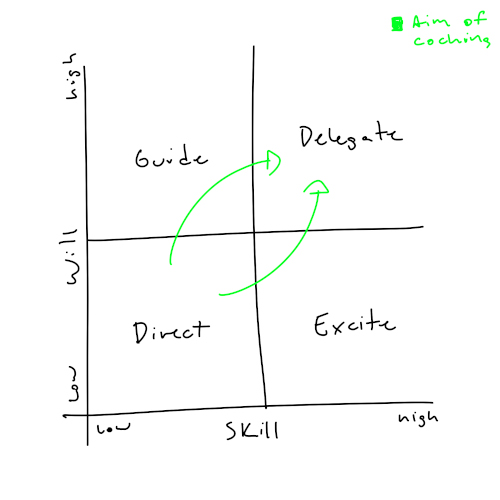
- For the task, diagnose the coachee's skill and will levels
- Skill depends on experience, training, understanding, role perception
- Will depends on the desire to achieve, incentives, security, and confidence
- Identify the appropriate style (Direct, Guide, Excite, Delegate)
- Agree your intended approach with your coachee
Ensure you are addressing the coachee's skill and will to execute specific tasks - e.g., "answering questions about past mistakes" rather than "improve communication."
Direct (skill and will are both low)
- First, build the will
- Provide clear briefing
- Identify motivations
- Develop a vision of future performance
- Then build the skill
- Structure tasks for quick wins
- Coach and train
- Then sustain the will
- Provide frequent feedback
- Praise and nurture
- Supervise closely with tight control and clear rules/deadlines
Guide (low skill, high will)
- Invest time early on
- Coach and train
- Answer questions/explain
- Create a risk-free environment to allow early mistakes and learning
- Relax control as progress is shown
Excite (high skill, low will)
- Identity reason for the low will
- Motivate
- Monitor, feedback
Delegate (skill and will are both high)
- Provide freedom to do the job
- Set objective, not the method
- Praise. Don't ignore this!
- Encourage coachee to take responsibility
- Involve in decision making
- Use "You tell me what you think"
- Take appropriate risk
- Give more stretching tasks
- Don't over-manage
